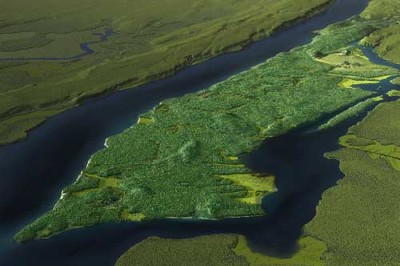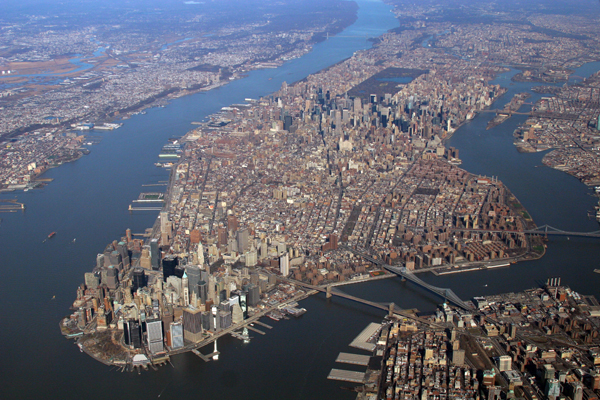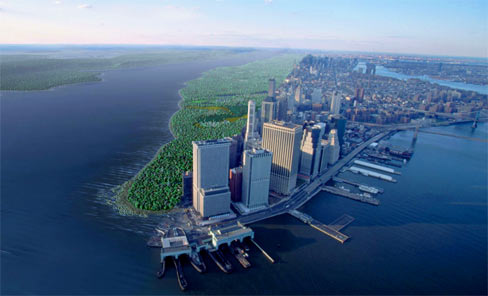A hopeful book about climate change: Bren Smith is a former fisherman and a failed (because of Hurricane Sandy) oysterman who invented a new kind of living from the sea, restorative ocean farmer. His crop of kelp and bivalves growing on ropes suspended in the water requires no inputs; it simultaneously draws down carbon, filters nitrogen and replenishes the oceans. Beyond sustainable- it is regenerative! Also, the price of entry to this job is low and could put ocean communities back to work, creating new jobs both farming and processing the resultant seaweed and mussels, oysters, and other bivalves. Be prepared to order some seaweed once you are done reading: www.blueevolution.com. And you may want to lend money to Greenwave, Bren Smith’s nonprofit that trains ocean farmers:www.greenwave.org.
Tag: ecology
Have You Read . . . ?
September 18, 2009

If the lush green island above looks strangely familiar, that’s because you’ve undoubtedly seen it many times before. Although if you’re having trouble placing just how you know this beautiful wild landscape, that’s because you’re probably used to seeing it look more like this:

Of course you know that the second picture is Manhattan Island as it looks today, the bustling hub of New York City. But the first picture above is the same island, Mannahatta or “Island of Many Hills,” (as it was called by local Native Americans) circa 1609.
For the past ten years the scientific researchers at the Mannahatta Project have been painstakingly recreating what the island would have looked like prior to the arrival of Henry Hudson and his crew on September 12, 1609. When the New World came calling, the island of Mannahatta was an amazingly diverse and abundant natural landscape, with more ecological communities, plant species, and birds than today’s Yellowstone, Yosemite, and Great Smoky Mountains National Parks. In addition to housing numerous large mammals, fish, and other wildlife, the island was also home to the Lenape tribe of people. In the 400 years since Hudson’s arrival, Mannahatta gave way to Manhattan, cultural diversity replaced biodiversity, and economic wealth replaced ecological wealth as the land that once existed was rendered virtually unrecognizable. Until now, that is. Over the past decade, the Mannahatta Project has been digitally rebuilding the land of yesterday by analyzing soil records, geography, rivers and wetlands, maps, descriptions of long disappeared plant and animal life, as well as by studying the landscape of the island today. The project is extensive in its research and astounding in its results.

You can explore the island past and present in extensive detail in the new book Mannahatta: a Natural History of New York City. Inside you’ll find a full explanation of the science behind the project, detailed descriptions of just what the researchers discovered about the island, and a look forward to what Manhattan might look like 400 years from now. All of this is accompanied by numerous stunning illustrations of what the researchers believe Mannahatta to have looked like long ago, as well as amazing side by side comparisons of various spots around the city as they look now and how they would have appeared in 1609.
And for a more distilled and interactive look at the project, check out the very cool Mannahatta Project website. As the project researchers believe, by looking backwards into the past, perhaps we can glimpse a new ecological vision for the future.
